
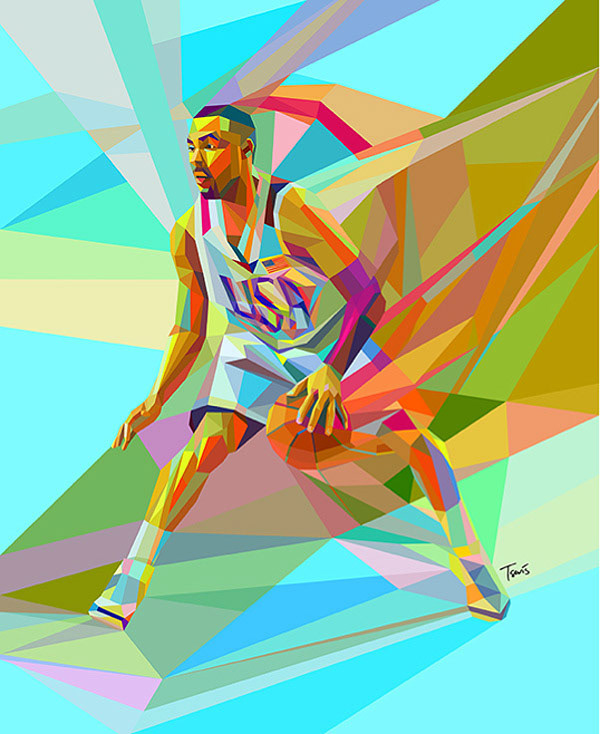
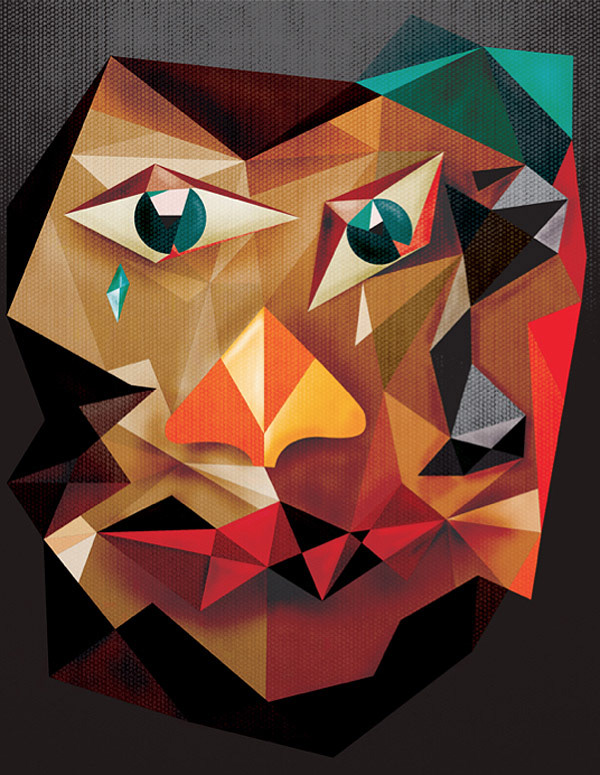

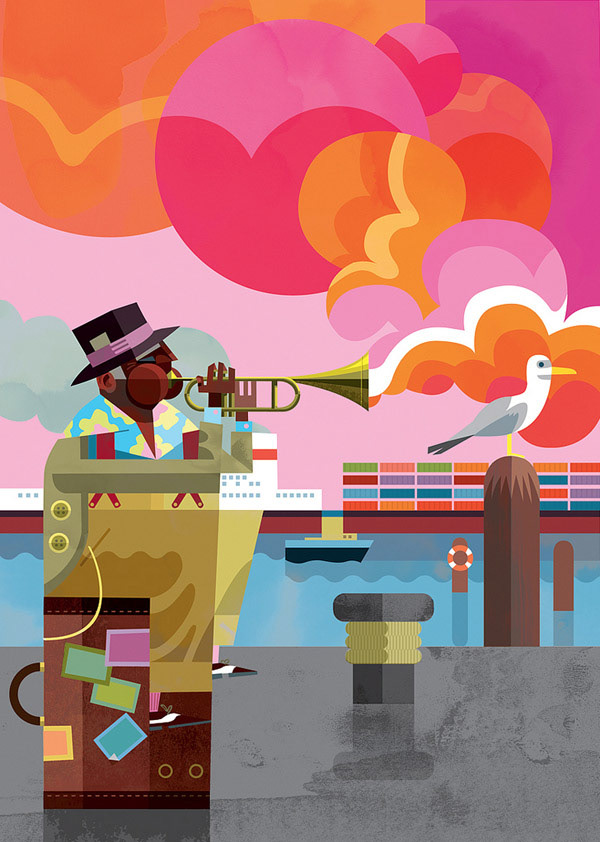


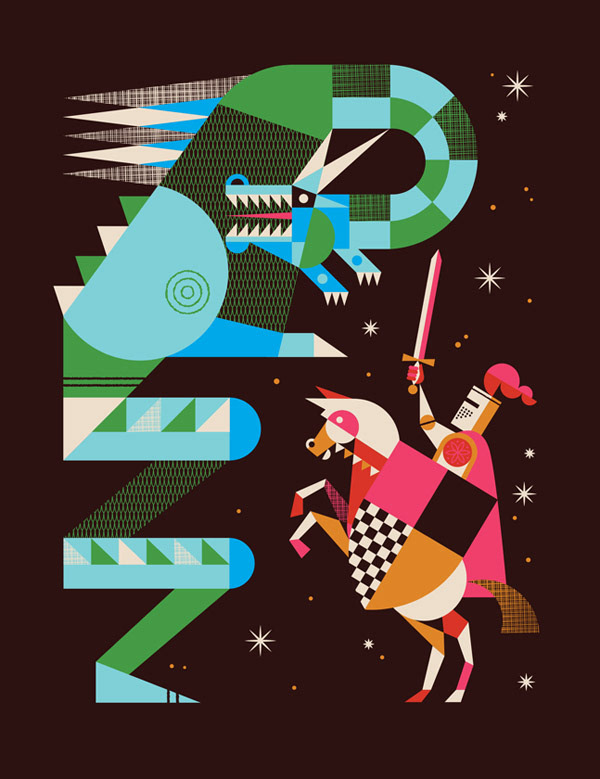


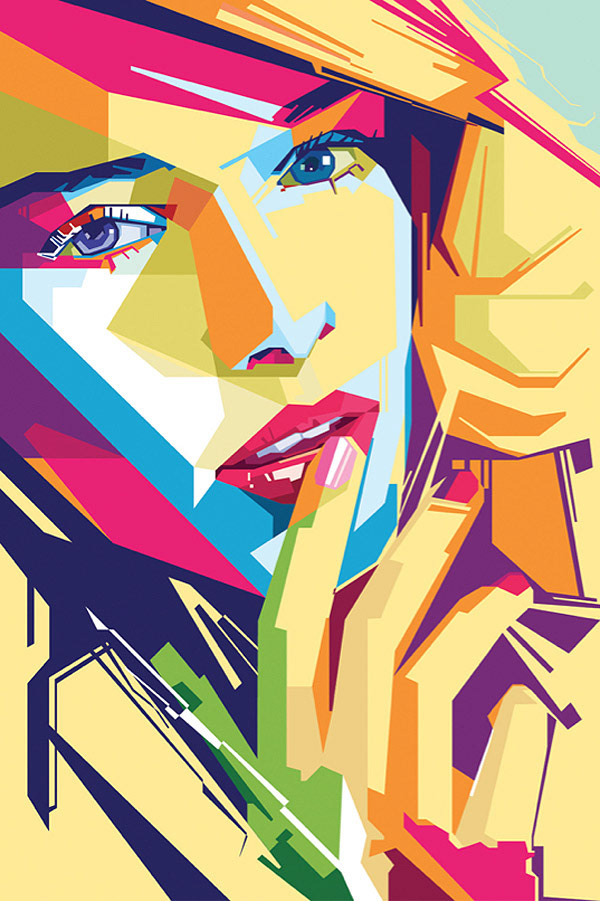
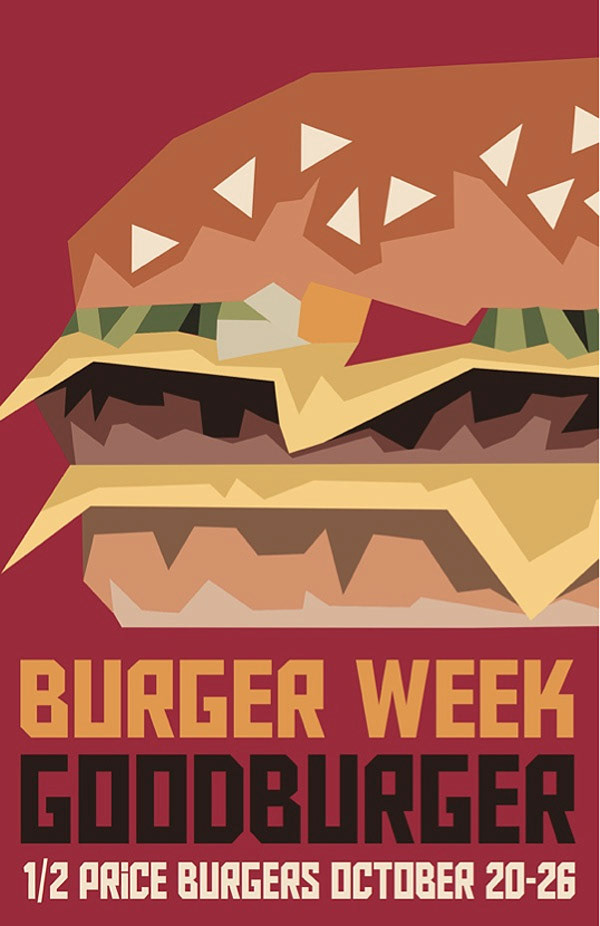

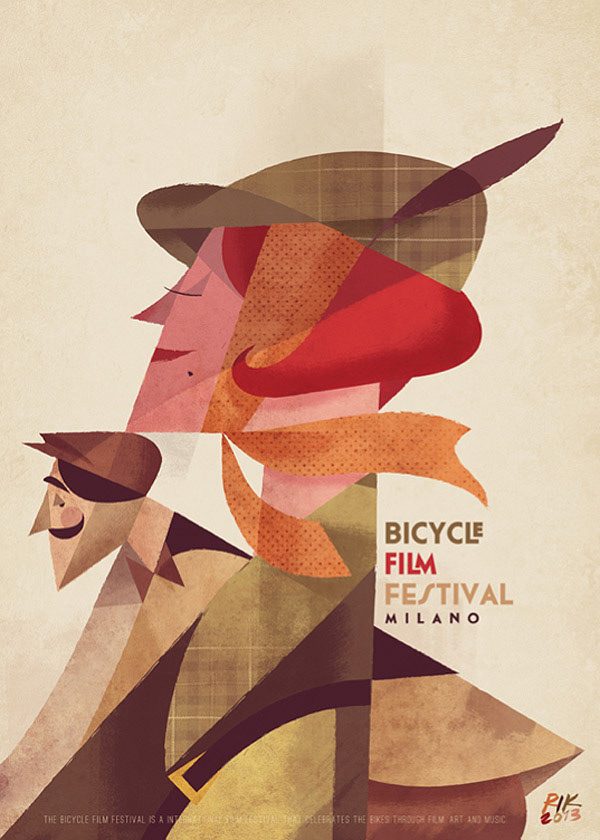
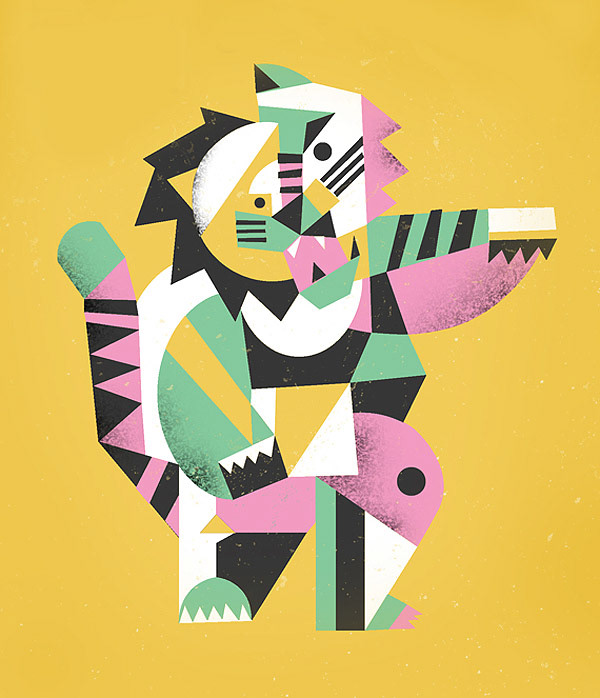
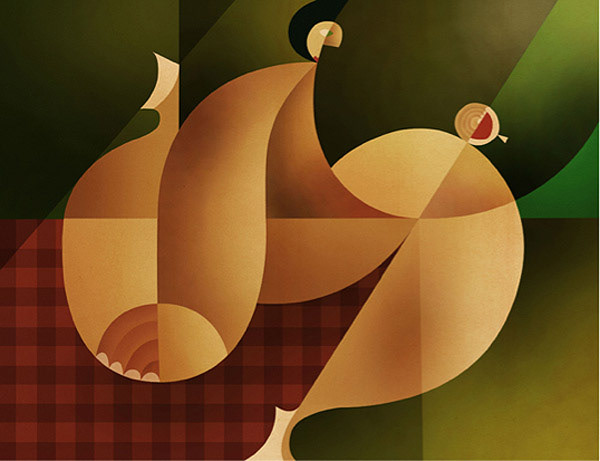
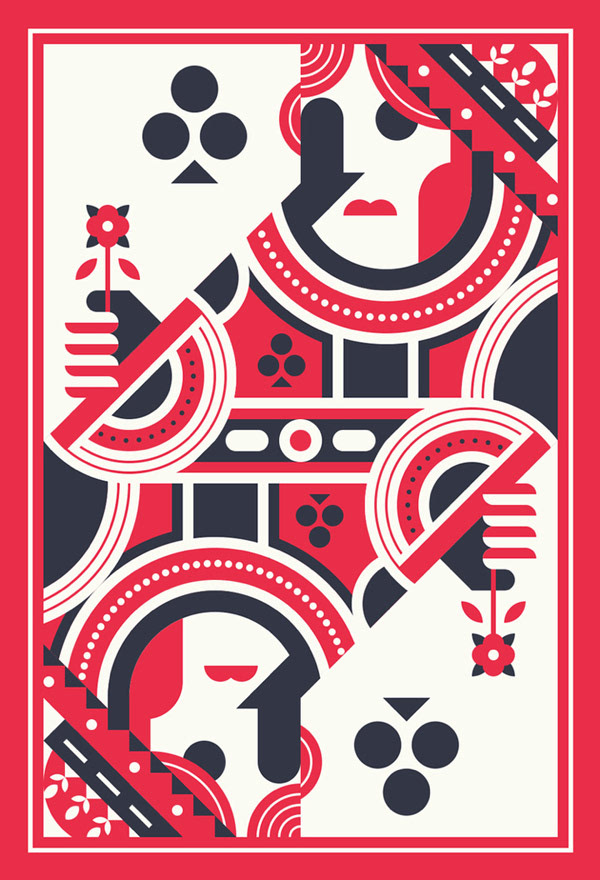


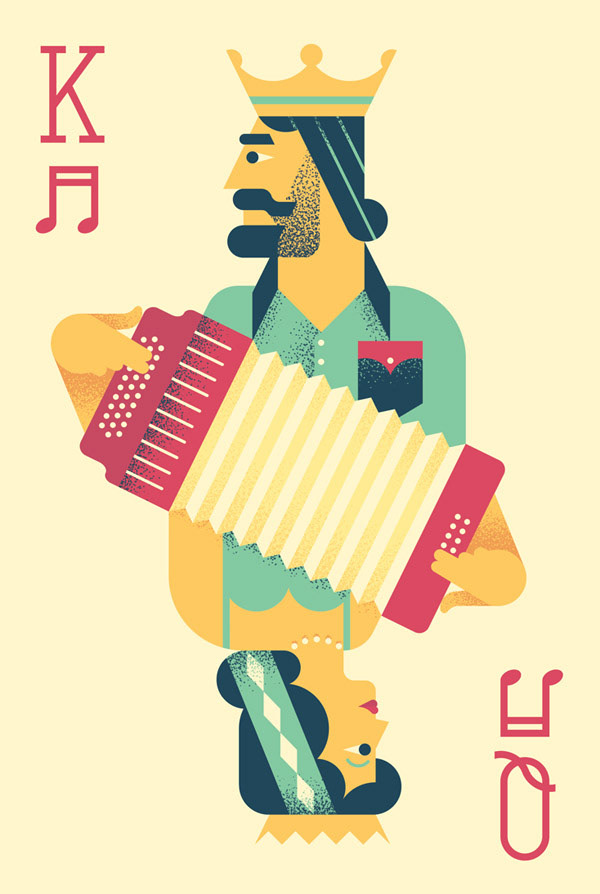
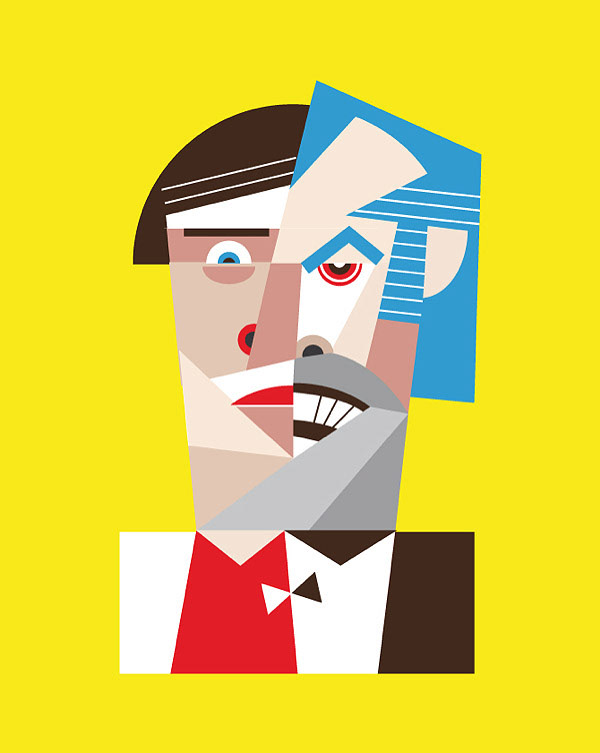
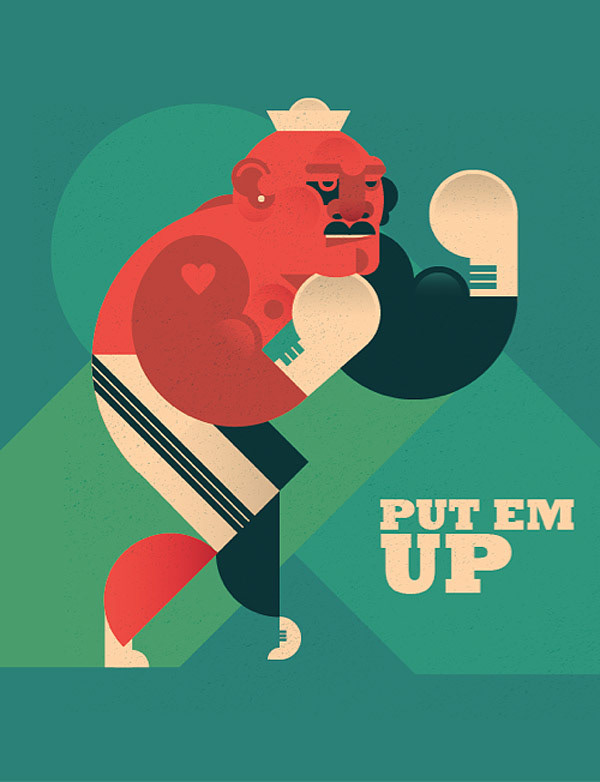


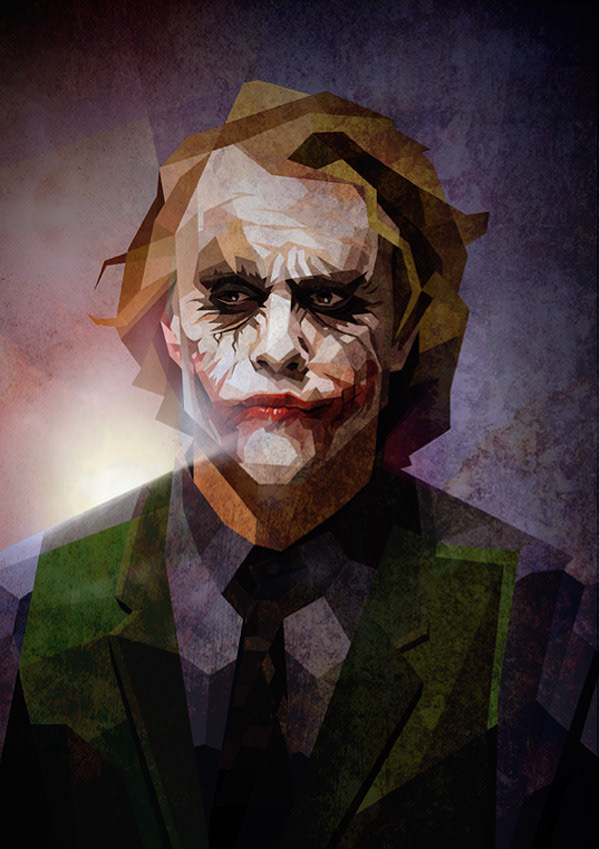

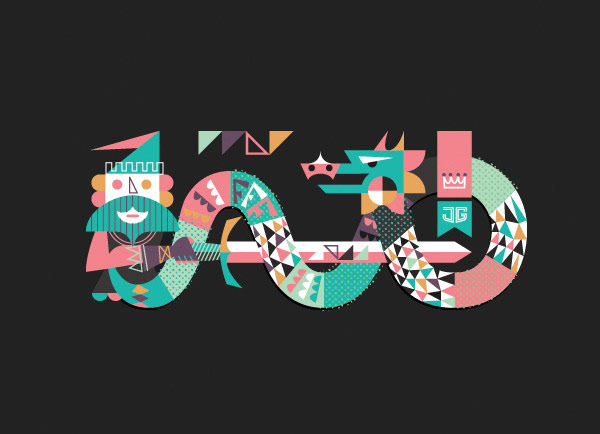



These images were found online at Spoon Graphics
Procedures
Prints of Braque and Picasso:
After you explored these artists (and the examples we collected as agroup), figure out a way to break up/divide your image in a linear way before the 'value' is added to specific sections. Think of examples of shattered glass, waves of water, the spiral of a seashell, or a geometrical division of shapes such as squares or triangles. These new lines should overlap the enlarged drawing of your subject. This will make your initial line drawing more visually complicated, and therefore more visually appealing to the viewer. The goal is to create an effect of a giant puzzle for the viewer to sort out.
Experiment with filling the shapes in your image with a gradient overlay (turn down the opacity). Look at each shape and decide which areas should have gradient overlays and which should not. Choose which direction you want the gradient fades to go (vertical, horizontal, diagonal, etc.)
Consider how to use different values in both the positive and negative space.
8. Class critique - relate finished work to cubist work studied.
Sketchbook Extension Activity
Shattered Values Assignment
1. Select a subject that you can make into a contour line drawing. Focus on a single object, such as a car, insect, person, or fish.
2. "Shatter" the subject in some way by breaking it up with lines or shapes or patterns of some sort. These lines will overlap your first drawing. (There are numerous methods you could use…be creative. Think of various ways that lines break up objects: shattered glass, wavy lines of water, spiral lines as seen on a snail shell, geometrical divisions of shapes.) The objective is to create more shapes in your drawing, like a giant puzzle. (Look at examples of Cubism for inspiration.)
4. Create two value scales on the worksheet with graphite/pencil. One will be divided into separate grays in the boxes, and one will be a blended value scale from black to white in the long box.
5. In your drawing, focus on each individual shape you have created, and apply the entire range of value (from black to light gray) in each shape. Proceed from shape to shape, deciding which part should be the richest black and which should be the lightest gray. Sometimes you may want to alternate from one shape to the next. You may also want to vary the direction of your shading inside your object from that outside your object in order to emphasize it.
6. Fill the entire paper with values, including positive shapes of the object and negative background shapes.
7. Critique your work. Compare and contrast to cubist work studied.